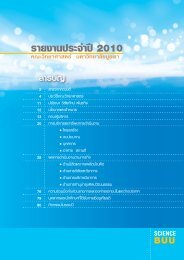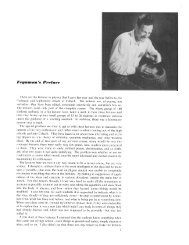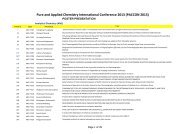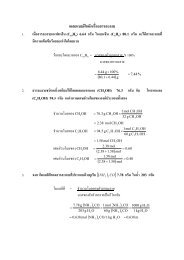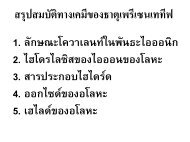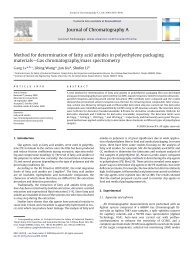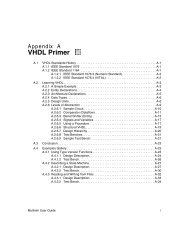USER MANUAL SWAN Cycle III version 40.72A
USER MANUAL SWAN Cycle III version 40.72A
USER MANUAL SWAN Cycle III version 40.72A
You also want an ePaper? Increase the reach of your titles
YUMPU automatically turns print PDFs into web optimized ePapers that Google loves.
Description of commands 57<br />
[ursell]<br />
[qb]<br />
the upper threshold for Ursell number.<br />
Default: [ursell] = 10.0.<br />
the threshold for fraction of breaking waves.<br />
Default: [qb] = 1.0.<br />
| TRANSm [trcoef] |<br />
OBSTacle < |<br />
| | -> GODA [hgt] [alpha] [beta] > &<br />
| DAM < |<br />
| DANGremond [hgt] [slope] [Bk] |<br />
| -> RSPEC |<br />
(REFL [reflc] < > ) LINe <br />
| RDIFF [pown] |<br />
CANNOT BE USED IN 1D-MODE.<br />
With this optional command the user provides the characteristics of a (line of) sub-grid<br />
obstacle(s) through which waves are transmitted or against which waves are reflected (possibly<br />
both at the same time). The obstacle is sub-grid in the sense that it is narrow<br />
compared to the spatial meshes; its length should be at least one mesh length.<br />
The location of the obstacle is defined by a sequence of corner points of a line. The obstacles<br />
interrupt the propagation of the waves from one grid point to the next wherever this<br />
obstacle line is located between two neighbouring grid points (of the computational grid;<br />
the resolution of the obstacle is therefore equal to the computational grid spacing). This<br />
implies that an obstacle to be effective must be located such that it crosses at least one<br />
grid line. This is always the case when an obstacle is larger than one mesh length.<br />
1. If a straight line is defined with more than two points, then the sum of the reflection<br />
of the parts may differ from the situation when you define it with just two points.<br />
This is due to the way obstacles are handled numerically in <strong>SWAN</strong>. It defines from<br />
computational grid point to its neighbor whether there is a crossing with an obstacle.<br />
In defining which directions of the wave spectrum should be reflected, i.e which<br />
directions are pointed towards the obstacle, it uses the obstacle coordinates as defined<br />
by the user to define the angle of inclusion. This angle will be smaller if more<br />
points are defined, and so the reflected energy will be less for the computational grid<br />
point. This problem becomes smaller if the computational grid points are closer to<br />
the obstacle.<br />
So the advise is to define obstacles with the least amount of points possible.





